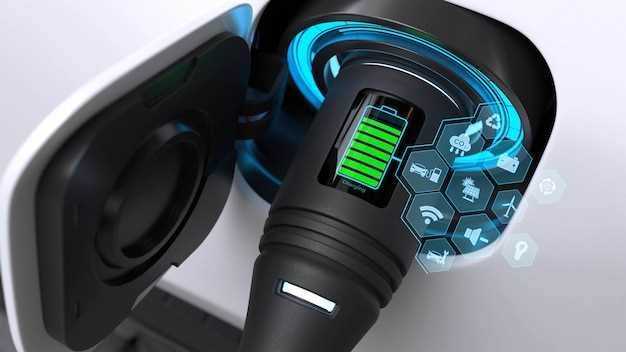
Diagnosing a dead battery can be a straightforward process if you know what signs to look for and the tools required for effective troubleshooting. A malfunctioning electrical system in your vehicle or device often points to a battery issue, making it essential to understand the basic symptoms and diagnosis steps. Whether you are facing a no-start condition in your car or intermittent power problems in electronics, knowing how to properly assess the situation can save time and money.
The first step in troubleshooting a dead battery is to recognize the common symptoms. Often, this includes dimming headlights, a slow-starting engine, or malfunctioning electrical components. By observing these warning signs, you can determine whether the battery is indeed the source of the problem. In some cases, external factors such as corroded terminals or faulty alternators might also play a role, so a thorough examination is crucial.
Armed with this knowledge, the next phase involves using the right tools to diagnose the battery’s condition accurately. A multimeter can be invaluable for measuring voltage, while a battery tester can provide specific insights into its health. Understanding how to read these measurements will further advance your ability to troubleshoot effectively. By following this guide, you will be equipped with the necessary steps to identify a dead battery and understand if replacement or further repair is required.
Identifying Symptoms of a Dead Battery

Recognizing the signs of a dead battery is essential for effective troubleshooting. One of the most common symptoms is the inability to start your vehicle. If you turn the key and hear a clicking noise or the engine does not turn over at all, this may indicate a battery issue.
Another important indicator is dim or flickering lights. If the dashboard lights are weak and headlights fail to illuminate brightly, the battery might not be providing adequate power. This symptom often becomes more noticeable when attempting to start the engine.
Additionally, electrical components may start malfunctioning. For instance, power windows might operate slowly, or the radio may cut in and out. These irregularities suggest that the battery is struggling to maintain a stable charge.
A foul odor can also signal a dead battery. A leaking battery may emit a sulfuric smell, indicating internal damage or corrosion. This condition requires immediate attention to avoid further complications.
Lastly, if your vehicle has an older battery, usually over three years, it’s wise to monitor its performance closely. Frequent jump starts or the need for recharging can signal that the battery has reached the end of its lifespan.
Conducting Basic Electrical Tests with a Multimeter

To effectively diagnose a dead battery, it’s essential to utilize a multimeter for basic electrical tests. A multimeter is a versatile tool that can measure voltage, current, and resistance, making it invaluable for identifying battery-related issues.
Measuring Voltage: Begin by setting the multimeter to the DC voltage setting, typically indicated by a “V” with a straight line. Place the red probe on the positive terminal of the battery and the black probe on the negative terminal. A healthy, fully charged battery usually registers around 12.6 volts. If the reading is significantly lower, the battery may be discharged or faulty.
Testing Current: To test the current, you must switch the multimeter to the appropriate setting. This often involves moving the red probe to a different port designated for measuring current (usually labeled as “A” or “mA”). Break the circuit by disconnecting the positive terminal from the battery and connecting the multimeter in series. A typical reading for a battery in good condition should show a small current when the vehicle is running or when electronics are in use.
Checking Resistance: Resistance testing can help identify issues with battery connections. Switch the multimeter to the resistance setting (Ω). With the battery disconnected, connect the probes to the battery terminals or the cable ends. A very low resistance value indicates a good connection, whereas a high reading could suggest corrosion or a loose connection.
These basic tests provide a solid foundation for diagnosing battery health and electrical system functionality. Proper understanding and execution of these measurements can lead to effective troubleshooting and resolution of electrical issues related to a dead battery.
Steps for Jumpstarting and Replacing the Battery
When faced with a dead battery, it’s essential to follow proper procedures to ensure safety and effectiveness. Here are the steps for jumpstarting your vehicle and replacing the battery if necessary.
1. Safety First: Before you start, make sure to wear gloves and eye protection. Check that both vehicles are turned off and are in park or neutral. Ensure the electrical components in both cars are also off to prevent any electrical surge.
2. Gather Your Tools: You will need jumper cables, a functional car with a working battery, and potentially a new battery if you determine that replacement is necessary. Keep a wrench handy in case you need to remove the old battery.
3. Jumper Cable Connection: Connect one red clamp to the positive terminal of the dead battery. Then, attach the other red clamp to the positive terminal of the good battery. Next, connect the black clamp to the negative terminal of the good battery. Finally, attach the last black clamp to a grounded metal surface on the car with the dead battery to avoid electrical shock.
4. Start the Donor Car: Turn on the engine of the working vehicle and let it run for a few minutes. This will allow the dead battery to receive a charge from the good battery.
5. Attempt to Start the Dead Vehicle: After a few minutes, try to start the car with the dead battery. If it doesn’t start immediately, let it charge for a few more minutes. If it still fails to start, consider the possibility of a faulty battery.
6. Disconnecting the Jumper Cables: Once the dead vehicle starts, carefully remove the jumper cables in the reverse order of connection. Start with the black clamp from the grounded surface, then the black clamp from the good battery, followed by the red clamp from the good battery, and finally the red clamp from the dead battery.
7. Testing the Battery: After jumpstarting, allow the vehicle to run for a while to recharge the battery. Consider using a multimeter to test the voltage of the battery. A reading below 12.6 volts indicates it may need replacing.
8. Replacing the Battery: If replacement is necessary, first disconnect the negative terminal followed by the positive terminal of the old battery. Remove any brackets holding the battery in place, lift it out, and install the new battery into the tray. Reattach the positive terminal first, followed by the negative terminal, ensuring all connections are tight to maximize electrical conductivity.
9. Dispose of the Old Battery Properly: Do not throw away the old battery in regular trash. Take it to a recycling center that accepts lead-acid batteries. This is essential for environmental safety and is often required by law.
Following these steps will help to safely jumpstart your vehicle and replace a faulty battery, ensuring reliable electrical performance in the future.



